Cycling Require

How do I find cycling routes that avoid traffic ?
Cycling is a great way to exercise and explore, but sharing the road with vehicles can be dangerous. To ensure a safe ride, it's important to find cycling routes that avoid traffic. Some tips include using online mapping tools like Google Maps or Strava, checking with local cycling groups, looking for dedicated bike infrastructure, and planning your route ahead of time. By following these steps, you can enjoy a safe and enjoyable ride without worrying about traffic.

Where can I find a map of local cycling routes ?
Cycling is an excellent way to explore your local area, stay fit, and enjoy the outdoors. If you're looking for maps of cycling routes near you, here are some resources that can help: City or Local Government Websites Cycling Clubs or Groups Online Cycling Communities Local Bike Shops Tourism Information Centers Smartphone Apps Google Maps Social Media Library or Bookstore Outdoor Recreational Maps Word of Mouth Remember to always check the condition of the route before heading out, as well as the weather forecast and any potential hazards along the way. Happy cycling!

What safety precautions should I take when cycling on urban routes ?
Cycling in urban areas can be a fun and efficient way to get around, but it's important to prioritize safety. Here are some key precautions to take when cycling on urban routes: 1. Wear a Helmet 2. Use Proper Lighting 3. Follow Traffic Laws 4. Be Predictable 5. Stay Alert 6. Choose the Right Route 7. Wear Reflective Clothing 8. Keep Your Bike Maintained
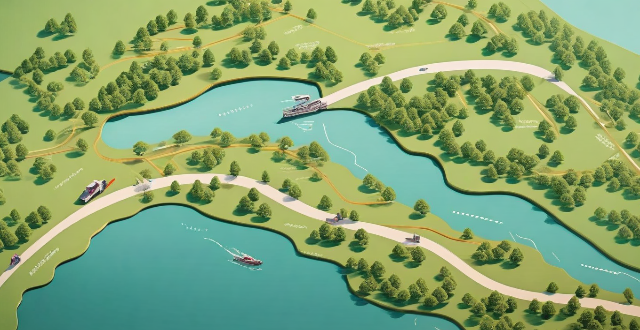
How do I plan a cross-country cycling route ?
Planning a cross-country cycling route involves determining the starting and ending points, choosing a suitable route, planning daily mileage, booking accommodations/campsites, and packing necessary gear. Factors to consider include distance, terrain, weather conditions, safety concerns, travel restrictions, fitness level, budget, and preferences. Tools like Google Maps, Bikely, or Komoot can help customize the route based on distance, elevation gain, and surface type. Aim for 50-70 miles per day if experienced or 30-40 miles if new to long-distance cycling. Pack spare tubes, pump, multi-tool, first aid kit, food, water, and appropriate clothing for expected weather conditions.

Are there any events or clubs that organize group cycling trips on specific routes ?
There are many events and clubs that organize group cycling trips on specific routes, providing opportunities for cyclists to explore new places, meet other riders, and enjoy shared experiences. Examples include the Gran Fondo World Championships, Tour de Cure, RAAM, local cycling clubs, bike shops, and online communities like Strava, Facebook, and Meetup. These organizations offer a range of rides and races, from beginner to advanced levels, and cater to different interests such as road biking, mountain biking, and fundraising.

How can I discover new cycling routes in my area ?
Finding new cycling routes can be an exciting adventure. Here are several ways to discover new cycling routes in your area: 1. Use cycling apps and websites like Strava, Komoot, Ride with GPS, and Bikemap. 2. Join local cycling groups through Meetup, cycling clubs, or Facebook groups. 3. Check with local bike shops for route recommendations and group rides. 4. Look at city or county parks departments for maps and events showcasing new routes. 5. Ask friends and family for hidden gem routes and join their rides. 6. Explore on your own by scouting detours on familiar rides and using maps. 7. Attend cycling events like road races and bike festivals to learn about new routes. 8. Use Google Maps to plan custom routes and spot potential paths in satellite view. 9. Check out local guidebooks on cycling in your region at bookstores or the library. 10. Visit local tourist information centers for brochures and advice on scenic routes. By utilizing these methods, you can expand your cycling horizons and enjoy the thrill of discovering new routes in your area while riding safely and respecting the rules of the road and trail.
![What are the best cycling routes in [city/region] ?](/imgs/2f8b31ee-f62a-46e3-8828-37a4af062f9b.png)
What are the best cycling routes in [city/region] ?
Cycling is a great way to explore the beautiful landscapes and attractions of [city/region]. Here are some of the best cycling routes that you can take: 1. Coastal Route: Start at [location] and end at [location]. Distance: [distance]. Difficulty level: [level]. Scenic spots: [spots]. 2. Countryside Route: Start at [location] and end at [location]. Distance: [distance]. Difficulty level: [level]. Scenic spots: [spots]. 3. Mountainous Route: Start at [location] and end at [location]. Distance: [distance]. Difficulty level: [level]. Scenic spots: [spots]. 4. Urban Route: Start at [location] and end at [location]. Distance: [distance]. Difficulty level: [level]. Scenic spots: [spots]. Remember to bring essential items such as water, snacks, a map, and a first aid kit. Wear appropriate clothing and gear, and always follow traffic rules and regulations.
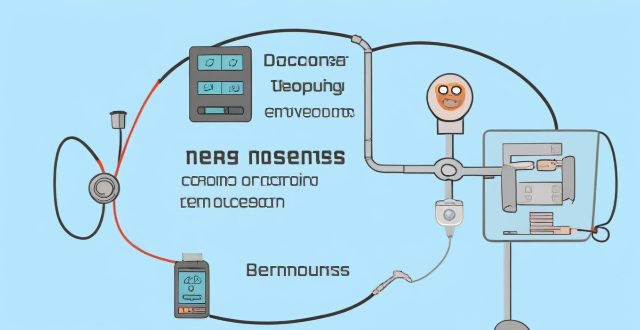
What are some common issues that require iPhone repairs ?
The text discusses common issues that may necessitate iPhone repairs, including battery drain, screen damage, water damage, software problems, sound issues, button damage, charging problems, and camera malfunctions. These problems can significantly affect the user experience and often require professional intervention to resolve, such as component replacement or a complete overhaul of the device.

What kind of cycling gear do I need for road biking ?
Road biking requires specific gear for safety, comfort, and efficiency. Essential items include a well-fitted helmet and road bike, moisture-wicking clothing, protective accessories like sunglasses and gloves, hydration options, tools for repairs, first aid supplies, safety items such as reflective gear and lights, performance enhancers including clipless pedals and cycling computers, storage solutions for longer rides or tours, and maintenance tools to keep the bike in top condition.
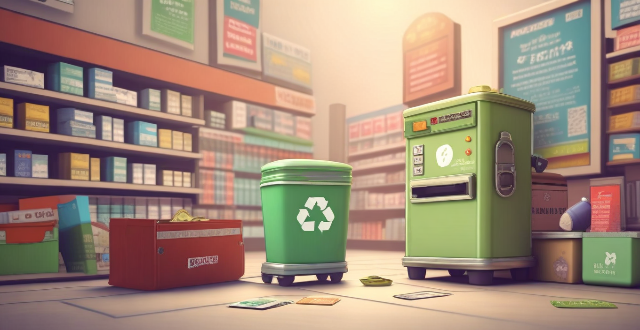
Can I get money for recycling my old iPhone ?
You can get money for recycling your old iPhone by selling it online, trading it in at a store, or recycling it through Apple's program. Selling online allows you to set your price and reach a large audience, but may take time and require dealing with shipping and payment issues. Trading in at a store is convenient and doesn't require finding a buyer, but the trade-in value may be lower than selling it yourself. Recycling through Apple's program is environmentally friendly and gives you a gift card, but the value may be lower than other options and requires packaging and shipping your iPhone. Choose the option that works best for you based on your needs and preferences.

What are some must-ride long-distance cycling paths ?
Long-distance cycling paths offer a unique way to explore the world's diverse landscapes and cultures. From coastal drives to mountainous trails, these routes cater to various preferences and skill levels. By embarking on these must-ride paths, cyclists can immerse themselves in breathtaking scenery, cultural experiences, and personal challenges that will leave lasting memories.

Are there any apps that suggest cycling routes based on my fitness level ?
The text discusses the topic of cycling apps that suggest routes based on fitness level. It introduces the concept and then lists five top apps for this purpose: Strava, MapMyRide, Komoot, Cyclemeter, and Ride with GPS. Each app is briefly described in terms of its features and how it suggests suitable routes. The conclusion summarizes the benefits of these apps for cyclists of all levels.

What are the benefits of using a GPS device for cycling routes ?
Using a GPS device for cycling routes offers benefits such as improved navigation, safety and security, performance tracking, and convenience. It provides accurate directions, real-time tracking, and the ability to save points of interest. Safety features include emergency alerts, night riding capabilities, and weather updates. Performance tracking measures speed, distance, elevation gain, and heart rate. Convenience is enhanced with no need for paper maps and automatic routing. Overall, using a GPS device can greatly enhance the cycling experience.

How do I prepare for a long-distance cycling trip ?
Preparing for a long-distance cycling trip involves careful planning, physical training, and packing essential gear. Start by researching your route's terrain and weather conditions, then build up your endurance with training rides and strength exercises. Ensure your bike is well-maintained and equipped with necessary tools and bags. Pack smart with suitable clothing, navigation tools, and a first aid kit. Plan for nutrition and hydration needs, prioritize safety with visibility and communication measures, and learn basic bike repairs. Consider legal and ethical aspects like traffic laws and environmental respect. Prepare mentally for the journey's challenges and establish support systems. Finally, have contingency plans in place for unexpected weather or route changes.

Do gasoline hybrid cars require special maintenance ?
This text discusses the maintenance requirements for gasoline hybrid cars, which combine a conventional engine with an electric motor for added efficiency. While these vehicles do not require extensive special maintenance, there are specific components that need attention. Regular maintenance such as oil changes, tire rotations, brake checks, and air filter replacements are still essential. Additionally, hybrid-specific maintenance includes monitoring battery health, checking the regenerative braking system, ensuring proper cooling of the electric motor, and maintaining transmission fluid levels. It is important to refer to the vehicle's owner's manual for specific maintenance schedules and seek out professional service when needed. By addressing both conventional and hybrid-specific maintenance needs, gasoline hybrid cars can run reliably and efficiently.

Can ecological protection areas help mitigate the impacts of climate change ?
Ecological protection areas can mitigate climate change impacts by carbon sequestration, habitat preservation, water conservation, soil erosion control, and nutrient cycling. These areas safeguard biodiversity, protect natural resources, and preserve ecosystem functions. They help reduce atmospheric CO2 levels, provide refuge for species adapting to changing environmental conditions, maintain stable water levels, filter pollutants from water sources, control soil erosion, and promote nutrient cycling processes. Supporting and expanding ecological protection areas is crucial for a sustainable future.

What types of chemicals require specialized personal protective equipment (PPE) ?
When working with hazardous chemicals, it is crucialWhen working with hazardous chemicals, it is crucial protective equipment (PPE) it is crucial to use the appropriate personal protective equipment (PPE) to ensure safety and prevent exposure. Here are some types of chemicals that require specialized PPE: Corrosive Chemicals: When handling corrosive chemicals, wear chemical-resistant gloves, aprons or gowns, safety goggles or face shields, and respiratory protection if necessary. Toxic Chemicals: When handling toxic chemicals, wear nitrile or chemical-resistant gloves, lab coats or coveralls, safety goggles or face shields, and respiratory protection depending on the type of toxic chemical. Flammable Chemicals: When handling flammable chemicals, wear flame-resistant clothing, gloves made from materials like nitrile or neoprene, safety goggles or face shields, and respiratory protection if necessary. Radioactive Chemicals: When handling radioactive chemicals, wear lead aprons or shields, gloves made from materials like latex or vinyl, safety goggles or face shields, and respiratory protection if necessary.

How do parallel hybrid electric vehicles (PHEVs) compare to traditional gasoline cars in terms of performance ?
Parallel Hybrid Electric Vehicles (PHEVs) offer better acceleration and fuel efficiency than traditional gasoline cars but may have lower top speeds and require more time for recharging. Gasoline cars have higher top speed capabilities and quicker refueling but are less efficient and require more maintenance. The choice between the two depends on individual needs and preferences.

What are the main challenges in implementing climate action plans ?
Implementing climate action plans is a multifaceted challenge that requires overcoming political, economic, technological, social, collaborative, and environmental barriers. Addressing these challenges will require a concerted effort from all stakeholders involved in the fight against climate change.
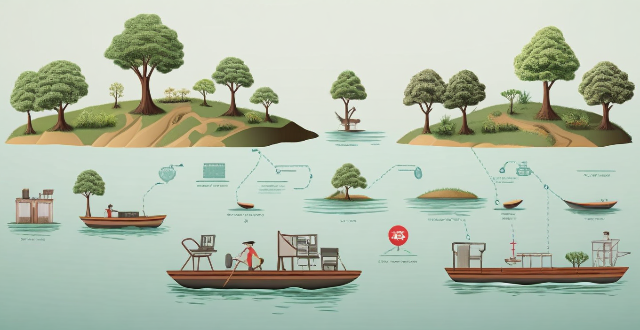
What is the potential of rainwater harvesting as a supplement to traditional water supplies ?
Rainwater harvesting offers environmental, economic, and water security benefits. It reduces runoff and replenishes groundwater. Economically, it saves on utility bills and provides a backup supply. During droughts or emergencies, harvested rainwater is a crucial resource. While generally cleaner than treated municipal water, it may require filtration. Communities can reduce urban heat island effects and raise awareness through rainwater projects. Challenges include legal restrictions and initial costs. Successful implementation requires proper design, maintenance, and pest management.

How does the maintenance cost of fuel vehicles compare to that of electric cars ?
The text discusses the comparison of maintenance costs between fuel vehicles and electric cars. It mentions that fuel vehicles typically require regular maintenance such as oil changes, air filter replacements, and spark plug checks. On the other hand, electric cars generally require less frequent maintenance than fuel vehicles. They do not have traditional engine oil, so oil changes are not necessary. However, they still require regular checks on the battery, brakes, and suspension system. Fuel vehicles often require more frequent maintenance due to their complex internal combustion engines and various fluids that need to be changed regularly. This includes oil changes every few thousand miles, as well as other routine services like brake pad replacements and tire rotations. Electric cars typically require less frequent maintenance because they have simpler drivetrains with fewer moving parts. Battery health is an important aspect of electric car maintenance, but it generally does not require as many check-ups as a traditional engine would. The cost of parts and labor for fuel vehicles can vary widely depending on the make and model of the vehicle, as well as the specific services required. However, fuel vehicles often have more expensive repairs due to their complexity and the number of moving parts involved. While electric cars may initially have higher upfront costs for batteries and specialized components, their maintenance costs tend to be lower in the long run because they require less frequent servicing and have fewer parts that need replacing.

How does the type of sport influence the design of a sports stadium ?
The type of sport played in a stadium significantly influences its design, with each sport having unique requirements and considerations. The size and layout of the stadium must accommodate the specific dimensions needed for the sport, such as a larger soccer field compared to a basketball court. The seating capacity is also influenced by the popularity of the sport, with larger stadiums often required for sports with large fan bases. Facilities and amenities within the stadium are tailored to the sport, including specialized equipment or technology like scoreboards for sports that require them. Acoustics play a role in some sports, with quiet environments necessary for tennis matches and louder environments for football games. Safety and security measures are also tailored to the sport, with additional padding or barriers needed for contact sports and extra security measures for sports that attract rowdy fans. In conclusion, the design of a sports stadium is heavily influenced by the type of sport being played, requiring unique considerations for each sport's needs in terms of size, layout, facilities, acoustics, and safety.

How effective is the COVID-19 vaccine ?
The effectiveness of the COVID-19 vaccine varies depending on the type of vaccine and the population being vaccinated. mRNA vaccines have an efficacy rate of around 95% against hospitalization and death due to COVID-19, while adenovirus vector vaccines have an efficacy rate of around 66% and inactivated virus vaccines have an efficacy rate of around 70%. Older adults and people with underlying health conditions may require additional doses or booster shots to achieve optimal protection against severe cases of COVID-19. Populations with higher rates of transmission may also require additional doses or booster shots to achieve optimal protection against COVID-19.

What is the difference between a personal trainer and a fitness instructor ?
The article discusses the differences between a personal trainer and a fitness instructor. Personal trainers design customized workout plans for individual clients, while fitness instructors lead group exercise classes. Personal trainers require certification from accredited organizations like NASM or ACE, while fitness instructors need certification from reputable organizations like AFAA or IDEA. Personal trainers often work in private settings with one-on-one clients, while fitness instructors typically work in public settings leading group classes. Both professions require dedication and continuous learning to stay up-to-date with the latest trends and techniques in the fitness industry.

What are the key principles of data protection legislation ?
Data protection legislation is designed to ensure that personal information is processed in a fair, transparent, and secure manner. The key principles of data protection legislation include: 1. Fairness, which involves transparency, purpose limitation, and data minimization. 2. Lawfulness and transparency, which require explicit consent and clear information about data processing. 3. Purpose limitation, which requires that data be collected for specific purposes and not further processed incompatibly. 4. Data minimization, which requires collecting only necessary data and retaining it only as long as necessary. 5. Accuracy, which requires keeping data up-to-date and correcting inaccuracies promptly. 6. Storage limitation, which requires not keeping data longer than necessary and storing it securely. 7. Integrity and confidentiality, which require appropriate security measures and ensuring confidentiality and privacy. 8. Accountability, which requires data controllers to ensure compliance with data protection principles and document their activities. By following these principles, organizations can protect individuals' privacy and build trust with their customers while complying with legal requirements.

Where can I recycle my old iPhone ?
Recycling your old iPhone is environmentally responsible and ensures personal data security. Options include Apple Renew, third-party retailers like Best Buy and Walmart, online platforms such as Decluttr and Gazelle, and local recycling centers like EcoATM and drop-off centers. Always wipe your iPhone clean of personal data before recycling.

Are there any risks associated with recycling an iPhone ?
Recycling an iPhone is generally considered a safe and environmentally friendly option. However, there are some potential risks involved in the process. Here are some of them: ## Data Security Risks 1. **Data Leakage**: If you don't properly erase all data from your iPhone before recycling it, someone might be able to access your personal information. This could include photos, contacts, messages, and even financial information if you have used apps like banking or shopping apps on your phone. 2. **Unauthorized Access**: If your iPhone falls into the wrong hands during the recycling process, someone might be able to use your device without your permission. This could lead to identity theft or other forms of fraud. ## Environmental Risks 1. **Improper Disposal**: If your iPhone is not recycled properly, it could end up in a landfill or incinerator where it will release harmful chemicals into the environment. This could cause pollution and harm wildlife. 2. **Resource Depletion**: Recycling an iPhone requires energy and resources, which can have negative impacts on the environment if not done sustainably. For example, if the recycling process uses too much water or generates too much waste, it could contribute to resource depletion and pollution. ## Economic Risks 1. **Loss of Value**: Once you recycle your iPhone, you won't be able to sell it for its full value. This means that you may lose out on some money that you could have earned by selling your old device. 2. **Cost of Recycling**: Depending on where you live and how you choose to recycle your iPhone, there may be costs associated with the process. For example, some recycling programs charge fees for accepting devices or require you to pay for shipping.
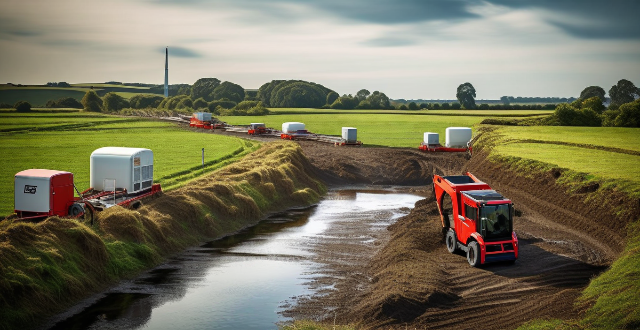
Are there any laws or regulations aimed at promoting waste reduction ?
Laws and regulations aimed at promoting waste reduction include extended producer responsibility (EPR), landfill taxes and bans, recycling targets, packaging regulations, local ordinances and programs such as curbside recycling and composting, waste reduction education campaigns, pay-as-you-throw programs, and international agreements like the Basel Convention. These measures encourage sustainable practices, reduce waste production, and promote recycling.

Is it possible to recycle the magnets used in permanent magnet motors at the end of their life cycle ?
Permanent magnet motors are widely used in various applications, including electric vehicles, wind turbines, and industrial machinery. However, these motors rely on strong permanent magnets to generate torque and convert electrical energy into mechanical energy. As with any technology, these magnets have a limited lifespan and will eventually need to be replaced or recycled. In this article, we will explore the feasibility of recycling permanent magnets used in motors at the end of their life cycle. One of the main challenges in recycling permanent magnets is that they often contain harmful materials such as neodymium (Nd), dysprosium (Dy), and boron (B). These elements are toxic and require special handling during the recycling process to prevent environmental contamination. Additionally, the extraction and refining processes for these elements can be energy-intensive and costly. Another challenge is the complexity of the recycling process itself. Permanent magnets are typically made up of multiple layers of different materials, including iron, copper, aluminum, and rare earth metals. Separating these materials requires specialized equipment and techniques, which can be expensive and time-consuming. Furthermore, the quality of recycled magnets may not be as high as that of newly manufactured magnets, potentially limiting their usefulness in certain applications. Despite the challenges mentioned above, recycling permanent magnets has several potential benefits. One significant advantage is the conservation of rare earth metals, which are essential components of many modern technologies but are also relatively scarce resources. By recovering these metals from discarded magnets, we can reduce our reliance on new mining operations and help ensure a more sustainable supply chain for critical technologies. Recycling permanent magnets can also lead to cost savings and improved energy efficiency. By reusing materials that would otherwise be discarded, we can reduce waste and lower production costs for new magnets. Additionally, since the recycling process itself requires less energy than extracting and refining raw materials from scratch, it can contribute to overall energy savings and reduced greenhouse gas emissions. There are several methods for recycling permanent magnets, including mechanical separation, chemical extraction, and hydrometallurgical processing. Mechanical separation involves breaking down the magnet into its constituent parts using various tools and machines, such as hammers, grinders, and magnetic separators. Chemical extraction involves dissolving the magnet in acid or other solvents to separate the rare earth metals from other materials. Hydrometallurgical processing involves using water-based solutions to leach out the rare earth metals from the magnet material. While each method has its advantages and disadvantages, all three require specialized equipment and expertise to ensure safe and efficient operations. In conclusion, while there are certainly challenges associated with recycling permanent magnets used in motors at the end of their life cycle, there are also significant potential benefits. By conserving rare earth metals, reducing waste, and improving energy efficiency, we can help create a more sustainable future for critical technologies like permanent magnet motors. With continued research and development in recycling techniques and processes, we can hope to overcome the current challenges and make recycling permanent magnets a viable option for extending their useful lifespan and minimizing environmental impact.

What are the challenges faced by recycling facilities in controlling plastic pollution ?
Recycling facilities face numerous challenges in controlling plastic pollution, including logistical issues in collection and sorting, technological and economic constraints in processing, environmental concerns, and the need for public education. Addressing these challenges requires collaborative efforts from governments, industries, and individuals committed to reducing plastic pollution through effective recycling strategies.